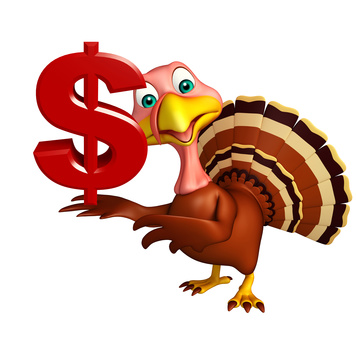First, estimate your 2019 tax tab by adding up your taxable income streams, then subtracting the tax breaks you know you will use. This exercise should help you determine whether you’ll take the standard deduction this year or itemize. The standard deduction for 2019 is $12,200 for single taxpayers and $24,400 for those married filing jointly. Each spouse who is 65 or older can add an extra $1,300 to the standard deduction, while singles 65-plus can add $1,650.
To avoid underpayment penalties, your estimated tax tab should be $1,000 or less, or you should pay tax, through withholding or estimated tax payments, throughout the year that equals at least 100% (110% for high-income taxpayers) of your 2018 tax bill or at least 90% of your 2019 tax tab. The IRS lowered the 90% threshold to 80% for 2018, but there is no indication the IRS will do it again for 2019. Be prepared to stick to the regular rules.
Use the IRS’ withholding estimator to see if you’re on track to meet one of those safe harbor tests. If you are off track, you still have time to fork over some more cash to Uncle Sam to pass one of those tests and skirt underpayment penalties. Lowering your taxable income will also reduce your tax tab, which could help you avoid those penalties, too.
With year-end so close, your 2019 tax estimate should be fairly accurate, which means your tax-trimming moves can be more precise. Consider the following moves to trim your 2019 tax bill before the calendar flips to next year.
Max out Retirement Savings.
If you are still working, you can stash up to $19,000 in a 401(k) or other employer retirement account by year-end. Those 50 and older by the end of the year are allowed an extra catch-up contribution of $6,000. That extra $6,000 for 2019 means a boomer could put away up to $25,000 for the year. That will reduce adjusted gross income and taxable income.
You can put up to $6,000 in an IRA for 2019, plus an extra $1,000 if you are 50 or older. Check whether your contributions will be deductible if you put them in a traditional IRA, f not, consider contributing to a Roth IRA instead if you fall below the income thresholds. The sooner the money goes into the IRA, the longer it can grow in the tax shelter, but the IRS lets you make 2019 IRA contributions up until the April 2020 tax-filing deadline.
If one spouse is retired, the working spouse can stash up to the maximum limit into a spousal IRA for the retired spouse. The working spouse must have enough earned income to cover all the IRA contributions for the couple.
If you have a health savings account, April 15 is also the deadline for making 2019 contributions of up to $3,500 for single coverage and up to $7,000 for family coverage. Once you are on Medicare, though, you can no longer contribute to an HSA. In that case, the contribution limit is prorated by month. If you turned 65 in July and enrolled in Medicare, you can only stash up to half a year’s worth of contributions in an HSA.
Make a Qualified Charitable Distribution (QCD)
Give all or part of your IRA Required Minimum Distribution (RMD) to charity through the qualified charitable distribution move. Traditional IRA owners who are age 70½ or older can give up to $100,000 from their IRA directly to charity every year. The QCD amount can count toward the owner’s RMD and won’t be included in his/her adjusted gross income.
This move is a boon to the charitably inclined who take the standard deduction and can no longer get a tax break from charitable gifts by itemizing. But it can also work for itemizers. Because the QCD lowers AGI, “it might help you qualify for other deductions that phase out with AGI,” says Luscombe.
Bunch Deductions
With the standard deduction doubling under tax reform and the additional standard deduction amount for seniors, you may be hard-pressed to find itemizing worthwhile. But, if you are on the cusp of itemizing, it might make sense to bunch deductions. Consider your tax situation for the next two or three years, and weigh whether it would be beneficial to bunch deductions this year or a future year.
Let’s say this year you had a lot of deductible medical expenses, which you don’t anticipate having next year. You may want to make a sizable charitable gift this year to increase your itemized tax deductions for 2019 over the standard deduction threshold. If you make that gift next year but end up using the standard deduction, you’d forgo the itemized charitable tax deduction.
0% Long-term Capital Gains Rate
The stock market has been soaring, so it could be prime time to consider taking some profits off the table if you qualify for the 0% long-term capital gains tax rate. For 2019, the 0% rate applies for single filers with taxable income up to $39,375, joint filers with taxable income up to $78,750, and head-of-household filers with taxable income up to $52,750. So, for example, if a married couple filing jointly has only $60,000 of income for 2019, they could sell investments for a profit of $18,750—and pay no tax on that gain.
While you have to be careful about buying back investments sold at a loss, there is no concern about immediately buying back investments sold at a profit and locking in a new, higher basis.
Harvest Losses
While the market’s done well in 2019, it wasn’t a straight shot up nor will every investment be a winner. Consider harvesting losses to offset capital gains and up to $3,000 in ordinary income.
If you like the investment, wait at least 30 days before buying back identical shares. Otherwise, you could run afoul of the wash-sale rule and disallow your capital loss.

